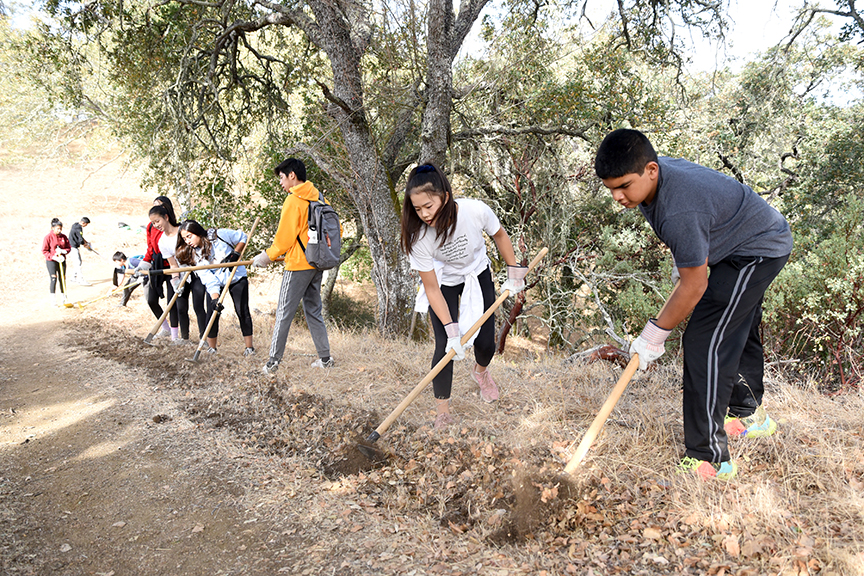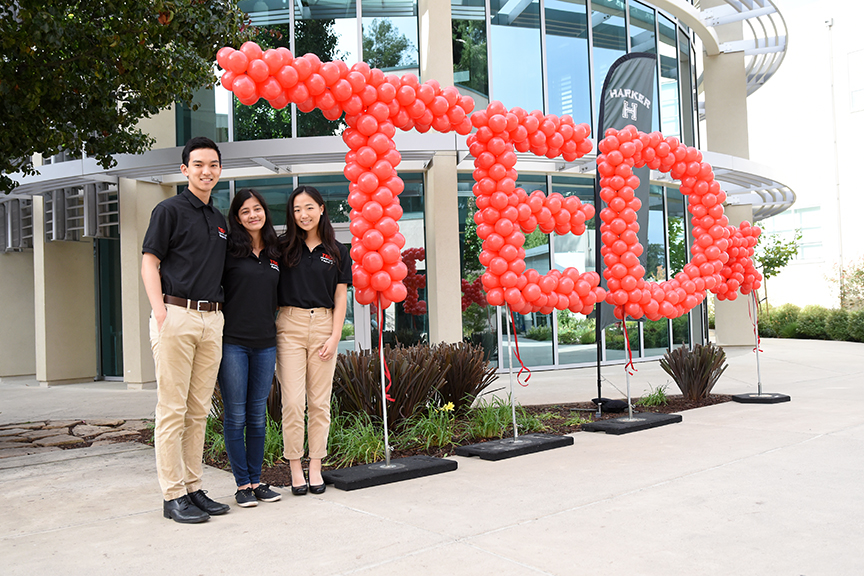The lower and middle school fall sports seasons recently came to a close. Check out how each team finished, along with all the team awards.
eweekly
Students attend constellation research conference
As part of the business and entrepreneurship department’s CareerConnect program, and thanks to the generous support of the Constellation Research organization, four upper school Harker students attended the annual Constellation Research Conference on Tuesday at the Ritz-Carlton in Half Moon Bay.
Grade 6 students head outdoors for annual trip
During the middle school’s trip week, sixth graders headed to Redwood Glen for four days of fun and bonding.
Grade 7 treks through national parks on annual trip
Grade 7 embarked on its annual national parks trip last week, experiencing the natural beauty and history of some of the country’s most picturesque spots.
Upper school students explore ways to serve community at Service Fair
Students filled Nichols Hall for this year’s Service Fair, where student-run organizations, as well as representatives of local and national organizations, answered questions about the many community service opportunities available.
Green Team recognized in Bow Seat Marine Debris Creative Advocacy Competition
The upper school’s Green Team was awarded a Distinguished Honorable Mention in the Bow Seat Marine Debris Creative Advocacy Competition.
Harker preschoolers carve pumpkins, learn the cycle of plant life reading ‘Pumpkin Jack’
Harker preschoolers had a delightful pre-Halloween activity, reading the book ‘Pumpkin Jack’ and carving their own pumpkins!
Students work to protect and learn about nature on Freshman Service Day
Last week, grade 9 students went to Rancho Cañada del Oro Open Space Preserve in Morgan Hill for Freshman Service Day, working to clear and widen the preserve’s trails.
TEDx Harker School 2019 features great speakers, interesting booths
Harker held its 2019 TEDx conference this past weekend and brought some great speakers and booths to the campus.
Student-organized Children’s Business Fair offers learning and business opportunities
On Oct. 12, the student-founded non-profit KidzRule, co-founded last year by Harker sixth grader Mikhil Kiran, held the second annual Santa Clara Children’s Business Fair in Santa Clara’s Live Oak Park.









